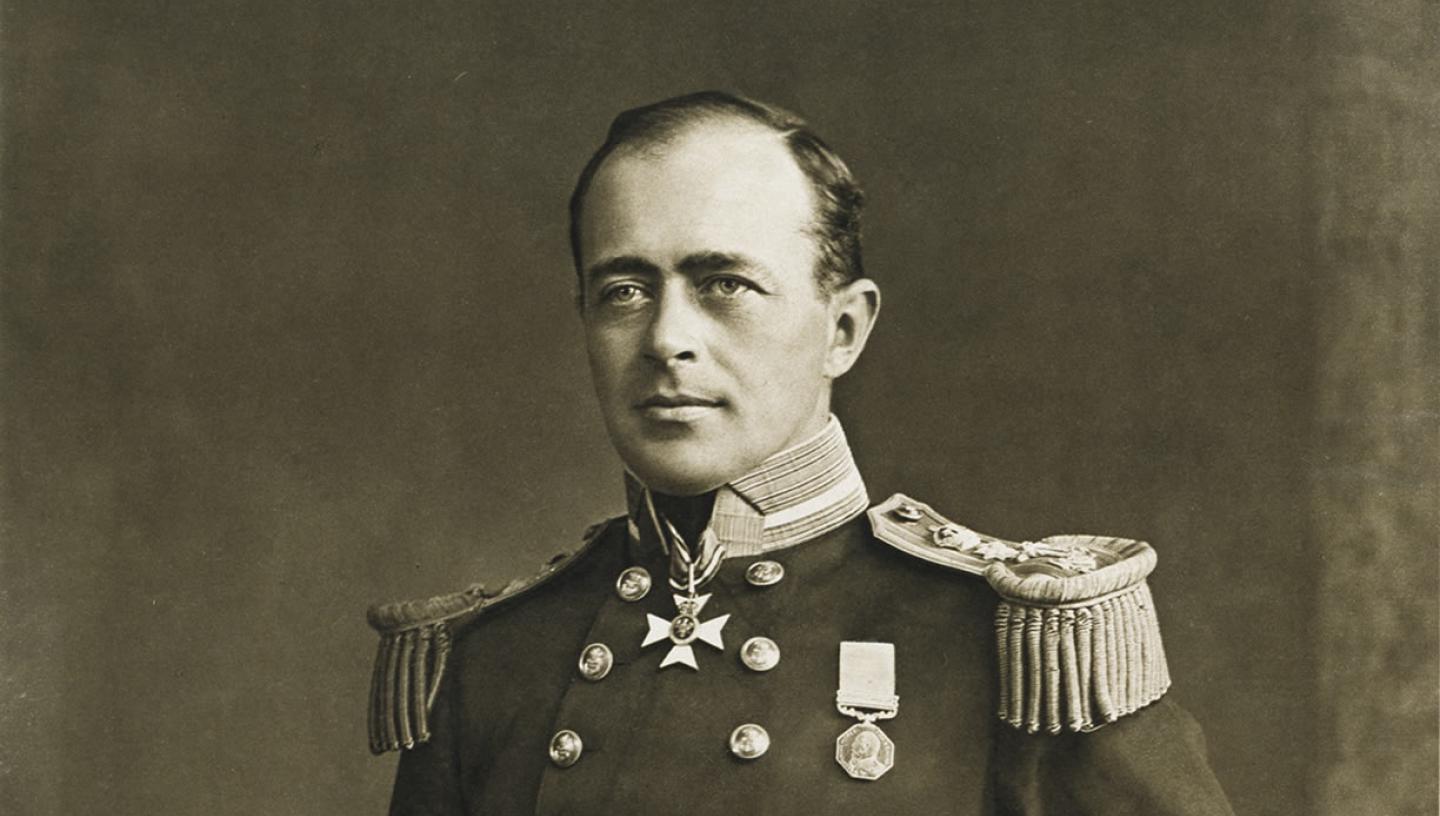
South Pole exploration: Robert Falcon Scott, 1901–04
In the early 20th century the race was on to reach the South Pole. Robert Falcon Scott led the first British expedition.
By the late 19th century, Antarctica was the last unexplored continent on earth. Western nations began to compete in its discovery, to gain knowledge and claim land. In 1900, the Norwegian explorer Carsten Borchgrevink reached latitude 78°50' south, less than 700 miles from the South Pole. The race for the Pole had begun. Robert Falcon Scott led the first British expedition that attempted to reach it.
Scott’s first expedition, 1901–04
Scott was born on 6 June 1868 near Devonport and joined the Royal Navy in 1881. Sir Clements Markham, the influential President of the Royal Geographical Society, championed British interest in the Antarctic, and recruited Scott, aged 31, to lead an expedition of scientists, naval and merchant seamen to the Antarctic on board the Discovery on 31 July 1901.
Scott set up his winter quarters in McMurdo Sound, on Ross Island, in February 1902. Unlike other European parties in Antarctica at the same time, the British National Antarctic Expedition was the first to explore land extensively. A programme of scientific work was undertaken, including zoology and geology. For most of the men, it was their first experience with skis and dog driving.
The main summer task was the journey south by a sledging party made up of Scott, Dr Edward Wilson and Ernest Shackleton. They left on 2 November with 19 dogs and a support party ahead. The party reached 82°17' south, about 460 miles from the Pole, on 30 December. Sickness and hunger then forced them back. They returned on 3 February 1903 but the journey had nearly cost them their lives. With Discovery frozen in, the relief ship, Morning, took eight crewmen, including Shackleton, back to England.
The rest of the party remained for a second winter, returning to London in September 1904. Scott's achievements were much praised and the British Admiralty and scientific community approved the expedition's scientific work.
Find out more: